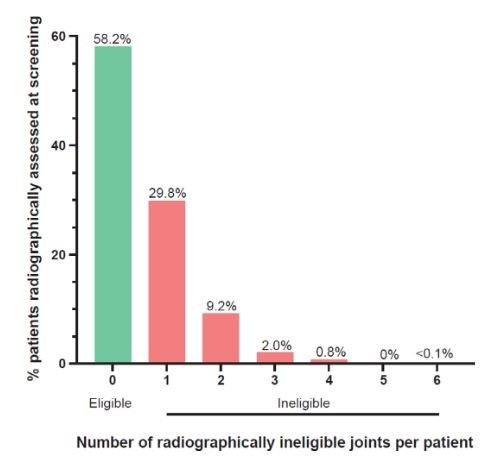Excellent reader performance in the largest anti nerve growth factor trial on OA
A recent study, where BICL leaders and several expert radiologists of the BICL team, were exclusively involved in has been published in the journal Osteoarthritis Imaging. The study analyzed reader performance during eligibility screening in the largest aNFG program – tanezumab.
Studies assessing the efficacy of aNGF inhibitors are required by regulatory bodies to implement an overall risk minimization strategy and to include a comprehensive assessment of joint safety adverse events. To exclude patients with, or at increased risk of, RPOA, a rigorous radiography-based eligibility assessment was implemented in the tanezumab program including significant training of imaging technologists and standardized image acquisition. Central reading was performed by BICL’s expert board-certified musculoskeletal radiologists trained for these studies using a detailed program-specific imaging atlas.
At >480 international sites, 23,079 patients entered screening and 13,797 were radiographically assessed. Across six sets of quarterly testing, pairwise central reader agreement on radiographic eligibility was 72-87% and on radiographic OA grading 77–84%. Among the 5,773/13,797 (41.8%) patients who met exclusionary criteria, 27% had disproportionate pain to radiographic findings. RPOA or risk factors for RPOA were each identified in <5% of patients (usually 1 joint) and <3% of knee/hip/shoulders. The study clearly showed that radiographic assessment is a valid and reliable way to screen patients entering large-scale, global NGF inhibitor trials.

